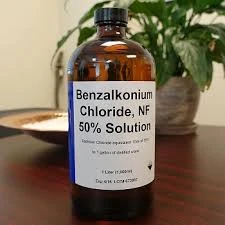coagulants and flocculants
Coagulants and Flocculants Essential Agents in Water Treatment
In the quest for clean and safe water, coagulants and flocculants play a pivotal role in water treatment processes. These substances are crucial in eliminating suspended solids and contaminants, ensuring that water meets the necessary quality standards for both environmental safety and human consumption. Understanding their functions, types, and applications is essential for anyone involved in water treatment.
What Are Coagulants?
Coagulants are chemical substances that promote the aggregation of fine particles in water. When added to water, they neutralize the electric charges that keep these particles suspended, allowing them to clump together into larger aggregates known as flocs. Common coagulants include aluminum sulfate (alum), iron (III) salts such as ferric chloride, and polyaluminum chloride. The choice of coagulant often depends on the specific characteristics of the water being treated, such as pH, turbidity, and the types of contaminants present.
The coagulation process usually follows a series of steps rapid mixing of the coagulant into the water, allowing the formation of flocs, and then a period of gentle mixing, known as flocculation, which helps the flocs grow larger and settle more easily.
The Role of Flocculants
Flocculants are substances that aid in the aggregation of particles after the initial coagulation step. They work by bridging the gaps between the flocs, promoting further growth and facilitating sedimentation. Flocculants can be natural, such as starches and proteins, or synthetic polymers. Anionic, cationic, and nonionic flocculants are commonly used, each serving different purposes based on the nature of the treatment.
In many water treatment applications, the use of flocculants enhances the efficiency of the process, allowing for quicker set times and improved removal rates of suspended solids. Their ability to improve the settling rate of particles has made them a staple in municipal wastewater treatment plants and various industrial applications.
coagulants and flocculants

Importance in Water Treatment
The combination of coagulants and flocculants is fundamental in various water treatment scenarios, including drinking water purification, wastewater treatment, and the treatment of industrial effluents. The coagulation-flocculation process significantly reduces the turbidity of water, removes pathogens, and decreases the levels of dissolved organic matter.
In drinking water treatment, for example, coagulants are first added to raw water to form flocs, which trap impurities and microorganisms. Following this, flocculants may be added to enhance the separation of these flocs from the treated water, resulting in cleaner and safer drinking water. Similarly, in wastewater treatment, effective coagulation and flocculation ensure that contaminants are removed before effluents are discharged into natural bodies of water.
Advantages and Challenges
The use of coagulants and flocculants comes with several advantages. They are typically cost-effective and can handle large volumes of water. Moreover, when optimized, these chemical treatments can lead to significant reductions in the operational challenges associated with sedimentation and filtration processes.
However, the use of chemical coagulants and flocculants is not without challenges. Issues such as the production of sludge, compatibility with other treatment chemicals, and the potential introduction of residual chemicals into treated water must be managed carefully. This has led to increased interest in natural coagulants derived from plant sources, which can mitigate some of these challenges while remaining effective in water treatment.
Conclusion
Coagulants and flocculants are indispensable in the water treatment industry, playing critical roles in ensuring the cleanliness and safety of our water supply. As the demand for effective water treatment solutions continues to grow, advancements in the formulations and applications of these agents will help address challenges related to water quality and resource management. By understanding and utilizing the capabilities of coagulants and flocculants, we can enhance our efforts in delivering safe, clean water to communities around the world.
-
lk-319-special-scale-and-corrosion-inhibitor-for-steel-plants-advanced-solutions-for-industrial-water-systemsNewsAug.22,2025
-
flocculant-water-treatment-essential-chemical-solutions-for-purification-processesNewsAug.22,2025
-
isothiazolinones-versatile-microbial-control-agents-for-industrial-and-consumer-applicationsNewsAug.22,2025
-
scale-inhibitor-key-solutions-for-water-system-scale-preventionNewsAug.22,2025
-
organophosphonates-versatile-scale-inhibitors-for-industrial-water-systemsNewsAug.22,2025
-
scale-and-corrosion-inhibitor-essential-chemical-solutions-for-water-system-maintenanceNewsAug.22,2025





